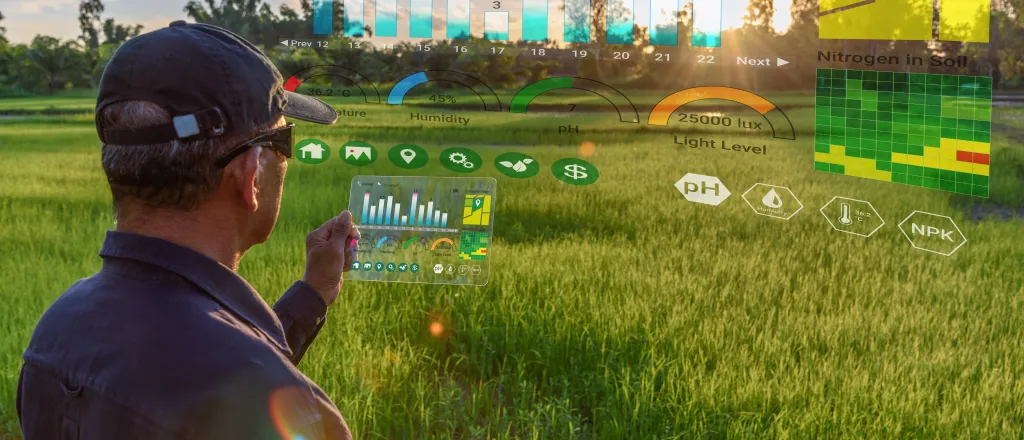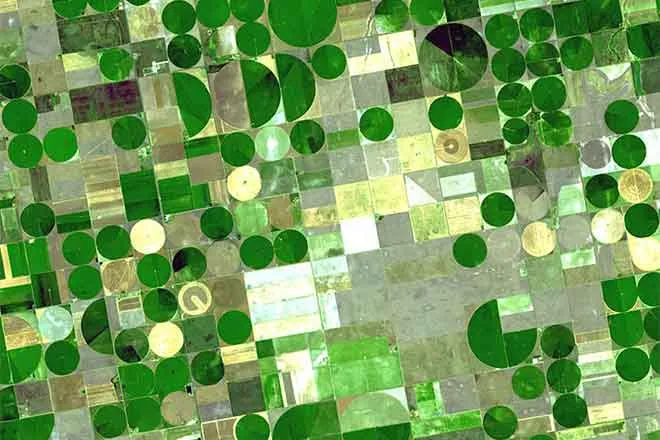
Ag stats: Colorado crop progress and condition report – week ending July 31, 2022
Scattered areas of the state received good moisture last week, while others remained extremely dry, according to the Mountain Region Field Office of the National Agricultural Statistics Service, USDA.
According to the U.S. Drought Monitor, 79 percent of the State is under drought conditions, down 3 percentage points from the previous week. Thirty-seven percent of the State is experiencing severe to exceptional drought conditions, down 3 percentage points from last week. Extreme drought conditions are affecting 5 percent of the State, equal to last week.
In northwestern counties, average temperatures and minimal precipitation were observed last week. Reporters noted that grasshoppers have taken a toll on pasture and rangelands.
In northeastern and east central counties, winter wheat harvest is virtually complete, with yields ranging greatly. Several areas saw below average temperatures, with highs ranging from the mid-70’s to mid-90’s. Areas of Cheyenne and Kiowa Counties experienced temperatures more 10 degrees below average, providing relief from consistent high temperatures the last several weeks. Lower temperatures and moisture received last week provided a much-needed reprieve yet slowed some crop activity. Yuma County received very beneficial moisture last week, with the southeastern area of the county receiving over three inches of moisture.
In southwestern counties, reporters noted recent precipitation delayed the completion of winter wheat harvest. Southern La Plata County received almost four inches of rain last week, slightly improving drought conditions. Rain has improved pasture and rangeland conditions, which allowed producers to continue grazing livestock.
In the San Luis Valley, scattered rainstorms were widespread last week, with areas of Costilla County receiving over two inches of rain. Reporters note the potato and barley crops continue to develop well. The barley crop is turning color and second cutting of alfalfa is progressing. According to county reports, irrigation water supply continues to be a concern, as aquifer levels continue to drop with the limited moisture.
In southeastern counties, below average temperatures were widespread last week. Northern Bent and Prowers Counties saw temperatures more than 10 degrees below average, while also receiving over an inch of moisture in some areas.
Stored feed supplies were rated 20 percent very short, 22 percent short, 54 percent adequate, and 4 percent surplus.
Sheep death loss was 85 percent average and 15 percent light.
Cattle death loss was 5 percent heavy, 80 percent average, and 15 percent light.
CROP AND LIVESTOCK PROGRESS | ||||
Commodity | Current week | Previous week | Previous year | 5-year average |
(percent) | (percent) | (percent) | (percent) | |
Alfalfa Hay | ||||
2nd cutting harvested | 56 | 43 | 66 | 69 |
3rd cutting harvested | 7 | 3 | 7 | 8 |
Barley | ||||
Turning color | 59 | 38 | 69 | 77 |
Corn | ||||
Silked | 51 | 38 | 81 | 74 |
Doughed | 13 | 10 | 13 | 9 |
Dry edible beans | ||||
Blooming | 50 | 25 | 72 | 62 |
Sorghum | ||||
Headed | 27 | 10 | 43 | 34 |
Turning color | 3 | 1 | 1 | 1 |
Winter wheat | ||||
Harvested | 99 | 88 | 97 | 95 |
DAYS SUITABLE FOR FIELDWORK AND SOIL MOISTURE CONDITION | ||||
Current week | Previous week | Previous year | 5-year average | |
Days suitable for fieldwork | 5.5 | 6.7 | 6.6 | 6.1 |
Topsoil moisture | (percent) | (percent) | (percent) | (percent) |
Very short | 20 | 20 | 14 | 12 |
Short | 35 | 45 | 30 | 28 |
Adequate | 45 | 35 | 55 | 57 |
Surplus | -- | -- | 1 | 3 |
Subsoil moisture | ||||
Very short | 25 | 32 | 16 | 15 |
Short | 30 | 40 | 32 | 28 |
Adequate | 40 | 28 | 52 | 54 |
Surplus | 5 | -- | -- | 3 |
CROP, LIVESTOCK, PASTURE AND RANGE CONDITION | ||||
Commodity | Current week | Previous week | Previous year | 5-year average |
(percent) | (percent) | (percent) | (percent) | |
Alfalfa hay | ||||
Very poor | 6 | 4 | 9 | 7 |
Poor | 6 | 9 | 13 | 12 |
Fair | 30 | 32 | 26 | 22 |
Good | 57 | 53 | 41 | 50 |
Excellent | 1 | 2 | 11 | 9 |
Barley | ||||
Very poor | 5 | 6 | 5 | 2 |
Poor | 5 | 6 | 11 | 5 |
Fair | 24 | 25 | 33 | 25 |
Good | 43 | 43 | 34 | 49 |
Excellent | 23 | 20 | 17 | 19 |
Corn | ||||
Very poor | 7 | -- | 1 | 4 |
Poor | 17 | 14 | 9 | 9 |
Fair | 53 | 50 | 25 | 24 |
Good | 18 | 31 | 50 | 54 |
Excellent | 5 | 5 | 15 | 9 |
Dry edible beans | ||||
Very poor | 3 | 5 | -- | 2 |
Poor | 16 | 25 | 13 | 14 |
Fair | 30 | 30 | 37 | 31 |
Good | 31 | 13 | 34 | 46 |
Excellent | 20 | 27 | 16 | 7 |
Onions | ||||
Very poor | 2 | 2 | -- | 1 |
Poor | 3 | 3 | 9 | 4 |
Fair | 30 | 35 | 40 | 30 |
Good | 60 | 55 | 46 | 59 |
Excellent | 5 | 5 | 5 | 6 |
Pasture and range | ||||
Very poor | 24 | 25 | 2 | 11 |
Poor | 13 | 26 | 10 | 15 |
Fair | 25 | 24 | 32 | 27 |
Good | 29 | 20 | 34 | 38 |
Excellent | 9 | 5 | 22 | 9 |
Potatoes inside the San Luis Valley | ||||
Very poor | 2 | 2 | 3 | 2 |
Poor | 3 | 3 | 16 | 8 |
Fair | 20 | 20 | 30 | 21 |
Good | 57 | 57 | 40 | 49 |
Excellent | 18 | 18 | 11 | 20 |
Potatoes outside the San Luis Valley | ||||
Very poor | -- | -- | -- | 1 |
Poor | -- | -- | 2 | 3 |
Fair | 40 | 50 | 34 | 19 |
Good | 60 | 50 | 55 | 65 |
Excellent | -- | -- | 9 | 12 |
Sorghum | ||||
Very poor | -- | -- | -- | 5 |
Poor | 5 | 14 | 2 | 7 |
Fair | 64 | 50 | 17 | 29 |
Good | 26 | 25 | 71 | 52 |
Excellent | 5 | 11 | 10 | 7 |
Sugarbeets | ||||
Very poor | -- | -- | -- | 1 |
Poor | -- | -- | -- | 3 |
Fair | 50 | 50 | 28 | 19 |
Good | 50 | 50 | 56 | 63 |
Excellent | -- | -- | 16 | 14 |
Sunflowers | ||||
Very poor | 1 | -- | -- | 2 |
Poor | 13 | 3 | 8 | 9 |
Fair | 51 | 60 | 25 | 30 |
Good | 33 | 36 | 62 | 53 |
Excellent | 2 | 1 | 5 | 6 |
Livestock | ||||
Very poor | 9 | 1 | 1 | 2 |
Poor | 11 | 1 | 6 | 4 |
Fair | 11 | 14 | 12 | 17 |
Good | 60 | 74 | 56 | 65 |
Excellent | 9 | 10 | 25 | 12 |
















